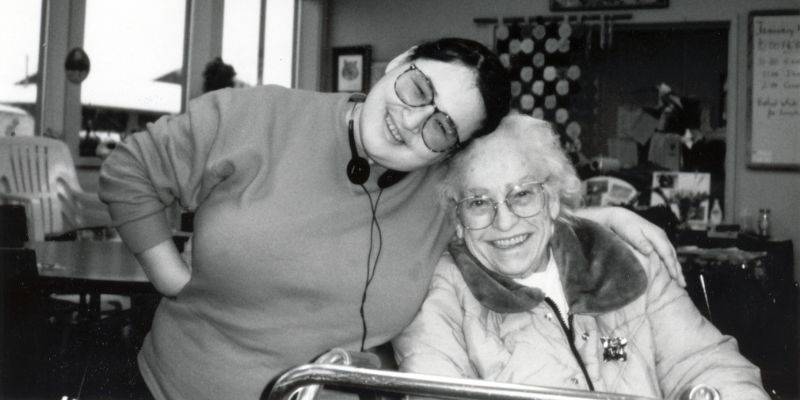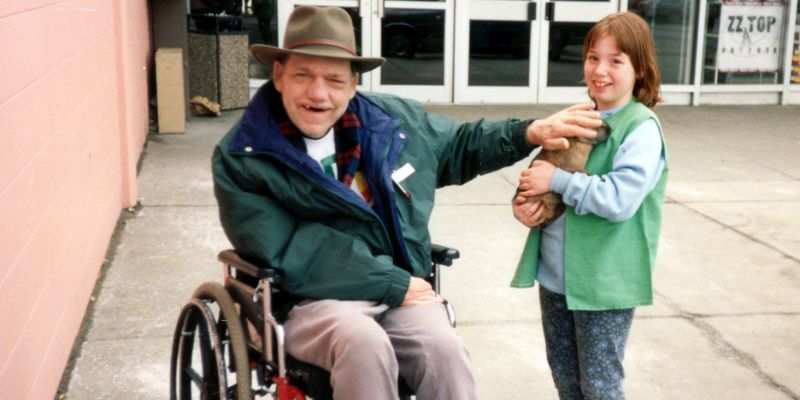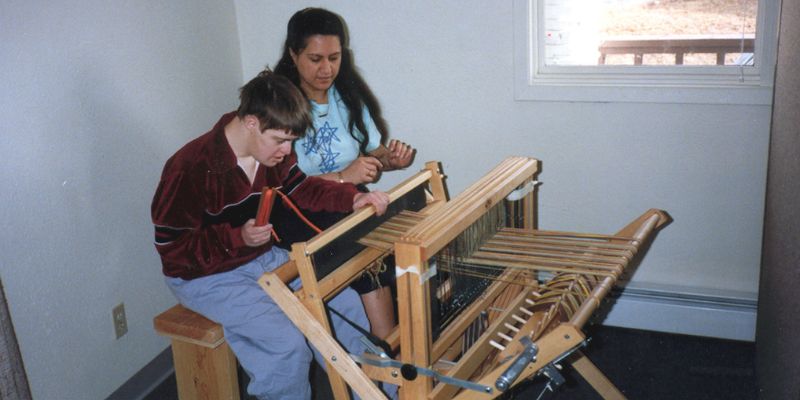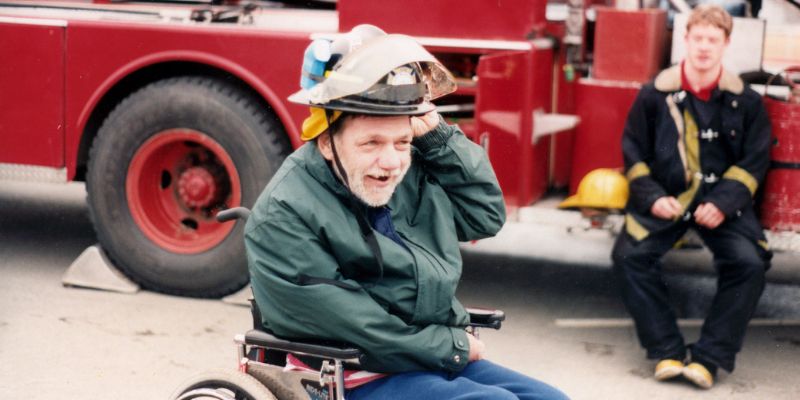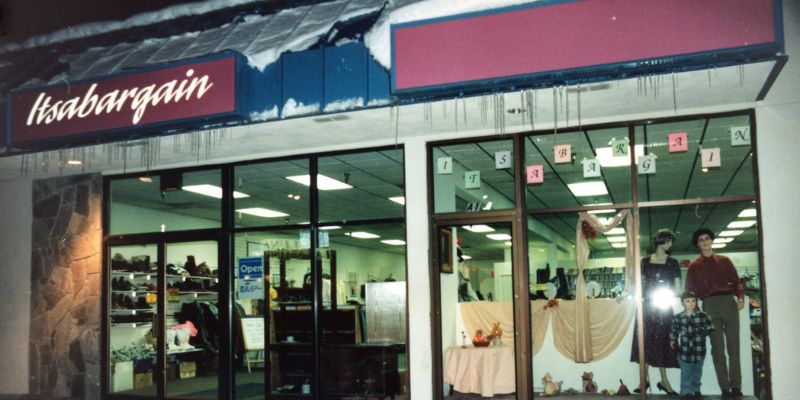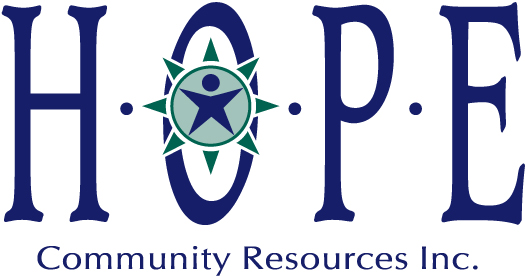The 1990s
Everyone should have Hope
Individual Rights
The 1990s was a decade of expansion. Hope was able to build on the accomplishments and learn from the mistakes of the past 23 years, moving ever closer to the goal of placing life choices in the hands of the people who rightfully stood to make them—the individual.
By the end of the 1980s, Hope's staff had tripled and employees were forced to share workspace. This affected confidentiality issues that Hope worked hard to maintain, and the crowded workplace decreased the effectiveness of Hope's staff. In 1990, Hope purchased an office building at 540 West International Airport Road, which remains, today, the base of Hope's operations.
Hope also started the decade by formalizing its 10 values, which became the most important force driving Hope's services. These values reflect the rights that all people should have in their lives, and they brought Hope closer to reaching its goals of inclusion and keeping families together.
Hope's Values
Since the beginning, Hope operated under principles that reflected the values of society. These values had always been—and continue to be—the driving force behind Hope's support services. In 1990, Hope decided to put these values in writing. The result was a list of 10 values that reflected and symbolized what everyone in this world had a right to have in their lives, including people with disabilities.
Hope Community Resources, Inc. has developed a set of values that are the driving force behind all services rendered. Hope wishes to confirm for each person receiving support as well as for each employee that they have continuous opportunities to utilize their rights granted under the Constitution of the United States of America. Specifically, these are the right to life, liberty, and the pursuit of happiness. Hope believes that these inalienable rights should be the driving force behind any identified agency values. The following list highlights how agency values correlate with constitutional rights.
Individuality
Hope recognizes and honors the unique qualities of each person we serve. Our services are tailored to reflect individual preferences, strengths, and aspirations to ensure that support is as unique as the individuals themselves.
Dignity / Status
Every person deserves to be treated with dignity and respect and recognized for their inherent worth. Hope supports environments where people feel valued and their contributions are acknowledged.
Opportunity
Hope is committed to collaborating with the people and families who choose our services to find paths for personal growth, purpose, and community involvement. Through various programs, they are encouraged to explore new interests and develop skills.
Security / Stability
Creating safe and stable environments is fundamental to our services. Hope ensures that the people we support have reliable support systems in every aspect of life.
Independence
Central to Hope's philosophy is the importance of supporting people to make their own choices. By promoting decision-making and self-reliance, people gain independence, confidence and control over their lives.
Self-Advocacy
The people we support are encouraged to voice their needs and desires in every area of life. Through guidance and education, they learn to advocate for themselves, making sure their voices are heard and respected.
Choice / Preference
Respecting personal choices is a fundamental of each and every person. Hope provides options and supports people in making decisions that align with their preferences, reinforcing autonomy and satisfaction.
Integration / Inclusion
Hope continually strives to create inclusive communities where everyone has a sense of belonging. By facilitating participation in community activities, we build connections and break down barriers to inclusion.
Relationships
Building and maintaining meaningful relationships is essential for every person's well-being. Hope supports people in forming connections with family, friends, and the broader community to enrich their lives.
Joy
At every chance we get, Hope celebrates life's moments and achievements that bring joy. We encourage people to engage in activities that lead to positive, happy, fulfilling life experiences.
Program Expansions
In an effort to further develop the Individual Program Plan—a plan of supports that gave individuals maximum control over which services they received—Hope added the Personal Futures Plan. This plan explored people's short- and long-range dreams, aside from the support aspects. Hope then combined the Individual Program Plan and the Personal Futures Plan, resulting in a revised planning tool called the Individual Support Plan. The combined plan personalized services and gave individuals maximum control of their lives.
Hope also secured a federal grant to address growing concerns about people with developmental disabilities placed in nursing homes because of their medical issues. By networking closely with the staff at Our Lady of Compassion (now known as Providence Extended Care) in Anchorage, and Wesley Rehabilitation and Care Center in Seward, Hope was ale to free many of these individuals from institutional confines and offer them community living options. Hope then offered them residencee. Hope was also instrumental in diverting people who were potential nursing home candidates into similar community home environments.
Hope was the first agency to offer a Family Support Program in Alaska. Driven by a growing waitlist for critical community services and supports, it was unique from inception. In an attempt to avoid crisis and provide early intervention for a family while it waited for full service delivery, the program constantly grew and diversified.
Jo-Anne Sullivan, the administrator of Health and Wellness, and Robin Ynacay-Nye, who worked in Family Support Services, collaborated on a program to provide health supports for medically fragile children living in their natural homes or in a foster home. The first community support nurse, Lori McClellan, was hired in 1992, and the program quickly expanded to provide supports for hospitalized children who were returning to their home communities. In 1993, Home and Communiby Based Waivers were implemented for children with complex medical conditions, and Hope's nursing staff developed the expertise to provide supports to Alaska's most remote villages.
Hope also experienced growth in its Supported Employment Services. Two commercial ventures—The Neighborhood Greenhouse in 1991 and Itsabargain Thrift Store in 1992—were opened.
The stores employed people with severe physical and developmental disabilities who were previously denied community employment and vocational opportunities through other community agencies. Although the programmatic side to these business ventures was successful, toward the end of the decade, they were closed because of a desire for inclusionary employment.
To ensure that the quality of Hope's services would continue, the Board of Directors made a long-term commitment, creating the Hope Endowment Fund in 1991. Two years later in October 1993, the agency publicly announced that it had an endowment, after which it launched a series of fundraising events and projects. Hope's plan, through building a large endowment, was to decrease its dependence on government funding. By the end of the decade, the Hope Endowment Fund was reaching $300,000. By the early 2000s, it was over $500,000.
In 1995, Hope placed an emphasis on helping people be comfortable and included in their community. Hope converted its residential programs into a supported living setting, customizing services for every individual. For the first time, families could individually design services for their children, such as in-home supports, home modifications for accessibility, adaptive equipment, and shared-care. Adults could also customize individual services that expanded their choices of where they wanted to live, with whom they wanted to live, and the type of employment or inclusion activities they desired.
In 1996, Hope had the opportunity to become a grantee for the Alaska Youth Initiative. The initiative was originally created to keep children with the most significant emotional and behavioral challenges in Alaska instead of being sent to long-term residential treatment centers out of state. The program was funded through both the AYI grant and Medicaid. The inititative offered a variety of services, including foster care, shared-care, case management, home-based therapy, activity therapy, crisis intervention, respite care, and individual and family therapy.
Subsistence Program
In 1994, Hope established a subsistence program in Dillingham. The two-year pilot project was funded by a joint grant from the Department of Vocational Rehabilitation and the Department of Mental Health. The program was, in theory, supposed to recognize subsistence as a valid form of employment in rural Alaska because it could support the individual, the family, and the community.
The subsistence project consisted of securing a mentor for individuals in their community. The mentor would teach subsistence activities that would be exchanged for payment, bartered for supplies and other needs, or be a part of their community's annual subsistence efforts.
Trades such as fishing, hunting and berry gathering, wood chopping, art carvings, and basket weaving were taught. The program was overwhelmingly successful, and many people were able to sustain themselves as contributing members of their community. By the end of 1995, close to 200 people chose to move from Anchorage back to their home communities because of these regionalized services.
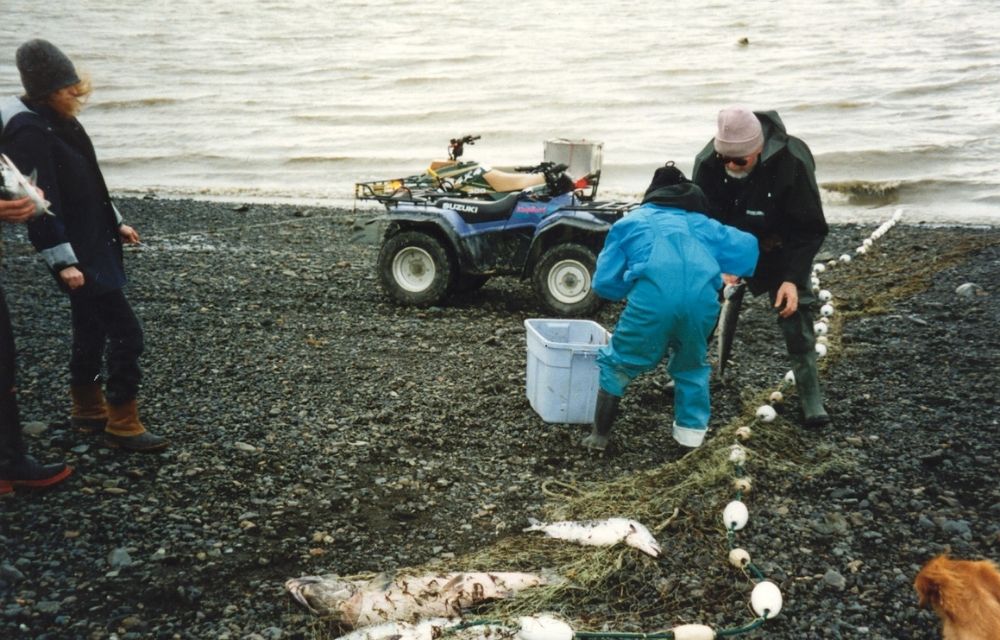


The subsistence program was introduced to the Kodiak area operations, and in 1996 the program was introduced in Anchorage as the Urban Subsistence Program. The urban program supported individuals who chose to live in Anchorage but wanted to participate in the subsistence lifestyle from their cultural heritage.
Another pilot project that year involved the development of Personal Futures Planning in rural Alaska. The program reunited people who were living in Anchorage with their families through summer subsistence camps in their villages. The project was so successful that it continued to be developed through the years to keep family and cultural ties for many people Hope supports.



Outside Expansion and Outreach Across Alaska
Hope turned its attention to the growing waitlist of people across the state who needed services. Many of these people and their families on the list were from rural parts of Alaska.
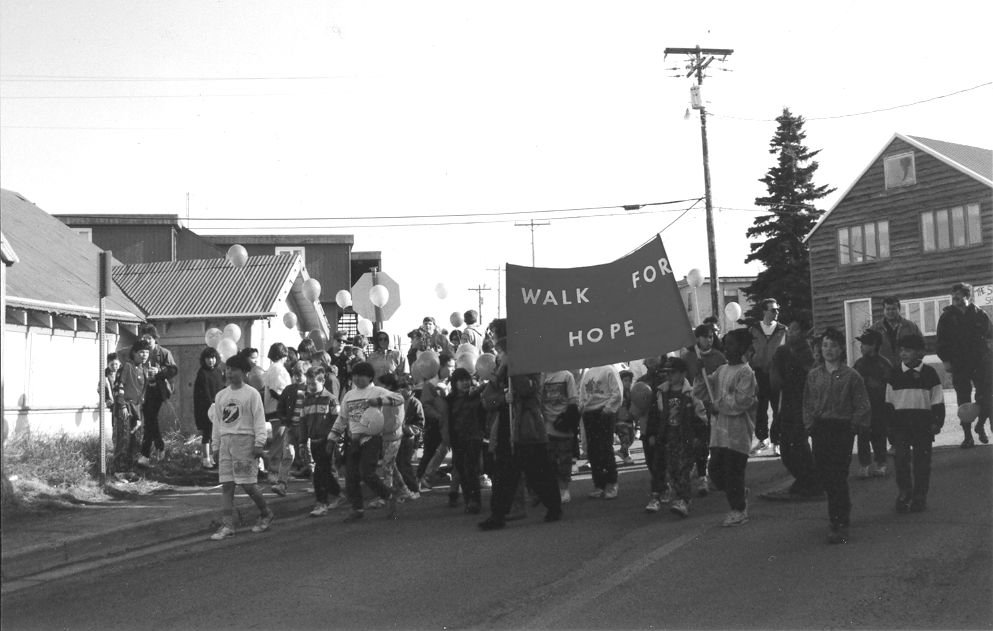 Through the agency's Supported Family Living program, Hope had a presence in Dillingham, Nome, and Kotzebue, offering these areas in-home, shared-care, and foster care assistance. Dillingham—Hope's oldest rural community connection—had hosted a Walk for Hope since the late 1980s. But the needs in this area were so great that in 1991 Hope opened its first regional office in Dillingham.
Through the agency's Supported Family Living program, Hope had a presence in Dillingham, Nome, and Kotzebue, offering these areas in-home, shared-care, and foster care assistance. Dillingham—Hope's oldest rural community connection—had hosted a Walk for Hope since the late 1980s. But the needs in this area were so great that in 1991 Hope opened its first regional office in Dillingham.
In 1991, Hope also had the opportunity to create a model respite voucher system for the Aleutian and Pribilof Islands, as well as the Dillingham and Greater Kodiak Area. It helped families stay together by providing them with relief from stresses that can occur when caring for children with developmental disabilities.
Hope opened its third regional office in Kodiak in 1992. In addition to the respite voucher services, Hope would provide residential and employment support to the Aleutians, Greater Kodiak Area, and the Pribilof Islands.
With a firm presence in Dillingham and Kodiak, Hope and the Community Resource Teams (a concerned group of parents and advocates from each community) began to develop fundraising events. In 1993, two Walks for Hope were added in Kodiak and St. Paul Island. A new event—the Kalsin Bay Community Barbecue and Auction—was also added in Kodiak. Virginia Sargent, a Hope parent, was the force behind the barbecue and auction. She took the initiative to start the event and continued to lead it annually. Her motivation turned into a fundraising effort that consistently earned between $18,000 and $20,000 a year.
 In 1995, Hope developed a fourth regional operation in Seward and the Resurrection Bay area.
In 1995, Hope developed a fourth regional operation in Seward and the Resurrection Bay area.
Even though Hope had been providing limited support from Anchorage to people in Southeast Alaska, it officially opened an office in Juneau in 1997 and offered respite and care coordination.
In 1999, Hope opened its Matanuska-Susitna Valley office in downtown Wasilla. The agency had supported individuals and families in the Valley for a few years, monitoring its operations from the Anchorage office. But the Matanuska-Susitna Borough had exploded in population in recent years, which also increased the number of requests for services. Hope decided it needed to have a presence closer to the people it supported. After just one year, the Mat-Su Valley operation almost doubled in consituents and was helping 55 individuals and families by 2001.
Practicum Program
Hope's Practicum Program started in 1995 when students studying Anthropology at the State University of New York worked with Hope for the summer. Hope provided housing and salary for the students. The program created hands-on experience for the students in understanding the relationships between culture and inclusion. In 1997, students from Ireland and from the Waterford Institute of Technology's Leisure Management Department joined the practicum experience to volunteer for the summer.
In 1998, Hope offered students the chance to work on a year-round basis. Students from Waterford Institute of Technology, the Institute of Technology Sligo in Ireland; Brigham Young University; the University of Utah; Black Hills State University, South Dakota; Wartburg College, Iowa; Villanova University, Pennsylvania; the Willamette Atkinson Graduate School in Portland, Oregon; the University of Alaska Anchorage; and students from New York have participated in the Practicum Program over the years.
Project Roadmaps
Hope had progressively offered its Supported Living Services to everyone who chose Hope. The only exception was 40 children and adults with severe developmental and physical disabilities Hope supported through its Intermediate Care Facilities for the Mentally Retarded.
The Intermediate Care program was a medical model with a long list of stringent, restrictive regulations that prevented Hope from offering the same services and choices to everyone the agency supported.
But in 1996, that changed when Project Roadmaps was born. The Roadmaps model offered the 40 children and adults the opportunity to live in a normal home in a normal neighborhood. The individuals and families were given choices of where to live, with whom to live, as well as the decision to hire support staff and what kind of services they desired and needed. It was the first time they were empowered to take control of their lives. Roadmaps offered these 40 people and their families the same choices that Hope offered everyone it supported.
Mike Renfro, then Administrator of Developmental Disabilities for the State of Alaska, forged a partnership between families, Hope, and the state. This collaboration made Roadmaps a reality.
Through invaluable assistance from the Mental Health Lands Trust and the Alaska Housing and Finance Corporation, Hope was able to secure the capital funding necessary to purchase single family homes throughout the community.
With the assistance of Max Chmura of PNP Associates, experts in Medicaid waiver funding, Hope voluntarily decertified its Intermediate Care Facilities program and recertified it as an Assisted Living Homes program. In celebration of this challenging move, Hope held its own Independence Day on July 4, 1996.
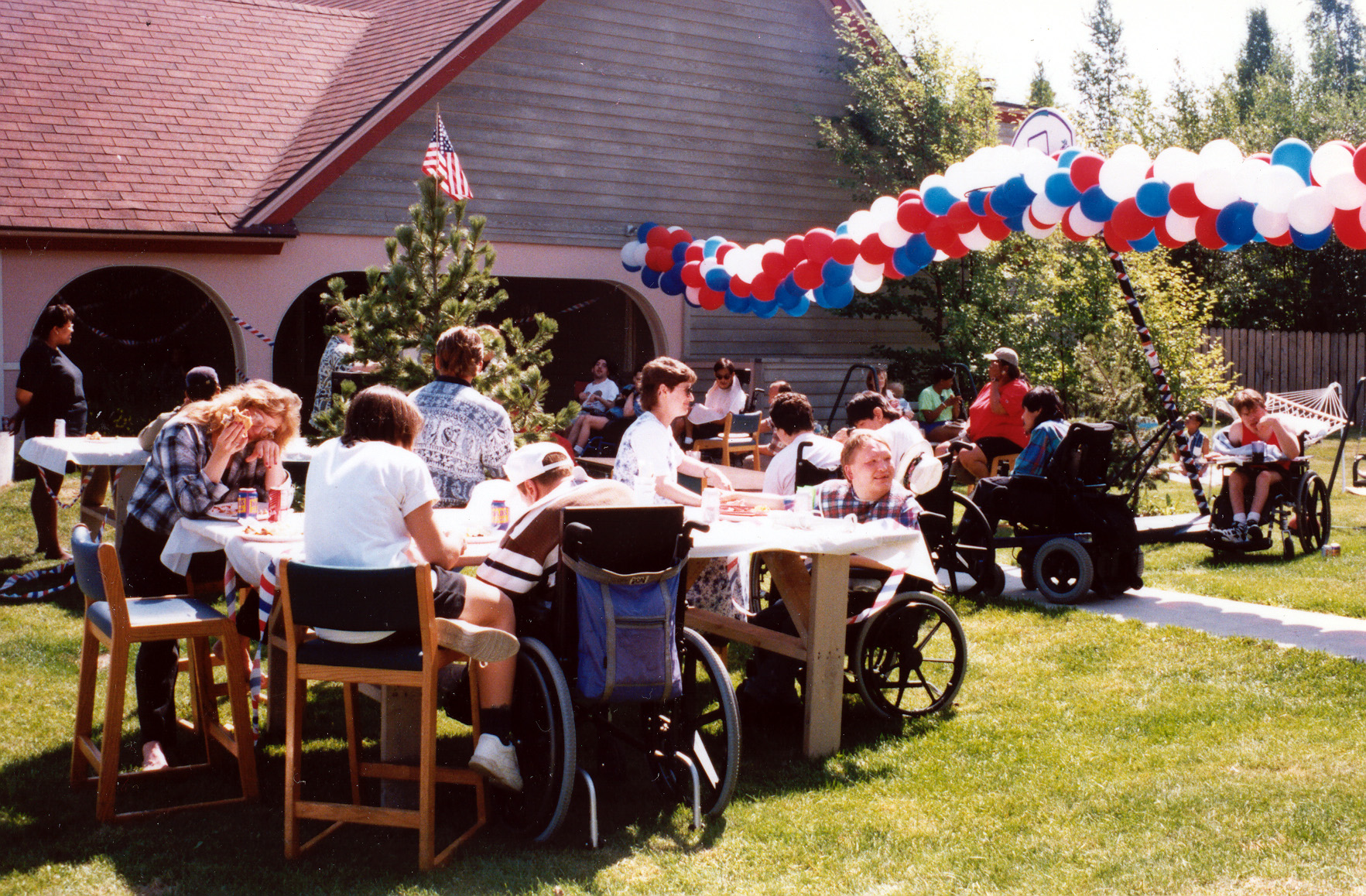
Project Roadmaps changed Hope's internal organization. Hope converted its service organization from departments to community networks. Every network was equal, with each having staff that could support all levels of services offered by Hope.
The Seal Point house was the first new construction under the Roadmaps Project. Governor Tony Knowles and Commissioner Karen Perdue attended the ribbon cutting ceremony to celebrate the completion of the house.

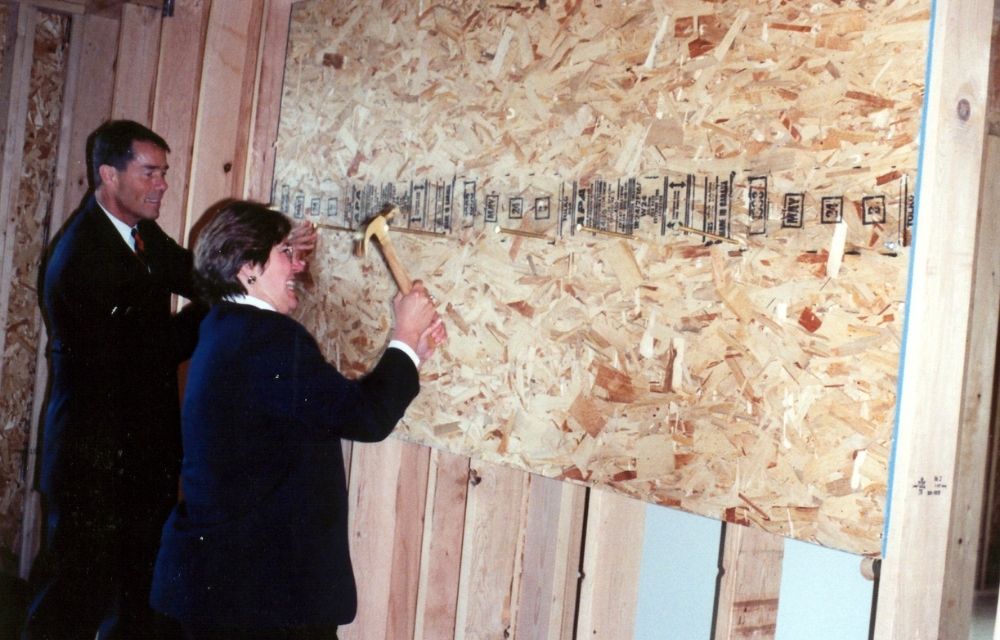
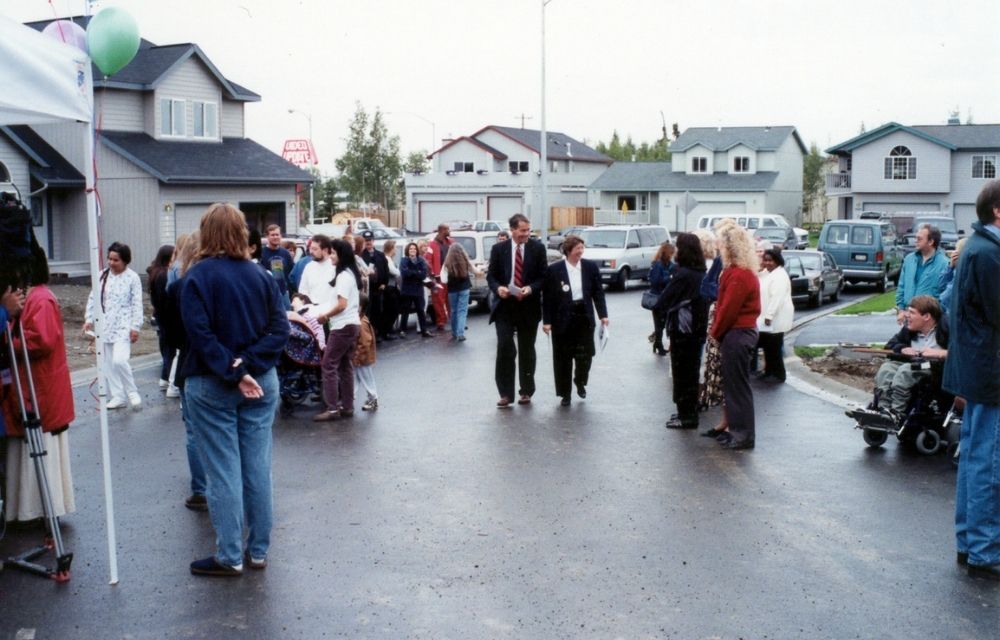
A new network—the Health & Wellness Network—was also created. This network was comprised of registered and licensed practical nurses and support staff.
In 1997, the network's supports were expanded to Hope's regional operations. A medical director was also added to the network, with Dr. William S. Browner filling the position.
That year, Alaska saw the official closing of Harborview Development Center. With the center's doors closed and Hope's decertification of its Intermediate Care Facilities, Alaska was finally declared institution free. It was a celebration for Hope and the State of Alaska, as well as for everyone with developmental disabilities.
Roadmaps initially affected the 40 individuals who were part of the Intermediate Care program, but extended the same services and lifestyle to those individuals from Harborview who chose Hope for support. Thirty-two people from Harborview moved into homes in the community of their choice. A Home Allinance team concept—management from the bottom up—was created to manage each home. The teams consisted of the individuals, their parents or guardians, and the live-in and day support staff.
The success of the Roadmaps project and Home Alliance concept garnered national attention. But the most important outcome of the Roadmaps project was that it gave people the opportunity to have maximum control over their own lives.
Ready for the New Millennium
Hope celebrated its 30th anniversary in 1998. It was a year of re-engineering the agency for the 21st century, including a name change and new logo. Although the name Hope Cottages was well known in Anchorage and the state, it did not reflect the growth and services for Alaskans with disabilities. Hope needed a name that was modern, non-institutional sounding, and relatively ageless. To better depict what Hope offered, Community Resources replaced the outdated Cottages. The agency had grown from a handful of kids to a wide variety of residential and supported employment services in multiple Alaska communities. The name Hope Community Resources was a perfect reflection of what the agency had become and where it could go in the future.
The 1990s were marked with historical milestones for Hope and the state. After two decades of advocating de-institutionalization, Alaska became only one of two states in the nation that was institution free for people with developmental disabilities. Hope had increased its statewide presence through its five regional offices and operations, advocating for the rights and values of all people with disabilities. More importantly, the decade brought unprecedented action and change on Hope's part to make sure that everyone it supported had ultimate control oft heir lives, services, and dignity.


